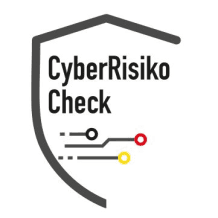What is Incident Response?
Incident Response is the process through which organizations respond to security incidents or attacks on their IT infrastructure. The main purpose of the Incident Response process is to react quickly and efficiently to threats to minimize damage and accelerate the restoration of normal operations. An effective Incident Response program can be the difference between a minor incident and a severe security incident that could significantly disrupt business operations.
Steps in the Incident Response Process
A typical Incident Response process consists of six phases:
1. Preparation
Before the discovery of an incident, it is crucial to be prepared. This includes establishing policies, defining roles and responsibilities within the Incident Response team, and training employees regarding security policies and incident reporting.
2. Identification
In the identification phase, a potential security incident is detected and assessed. This can occur through monitoring and alarm systems or by user reports. Quick and accurate detection is critical for effective incident management.
3. Containment
Containment of the incident aims to prevent further damage. Short-term measures could include isolating affected systems, while long-term solutions aim to fully stop the attack.
4. Eradication
In this phase, the attackers are removed from the affected systems, all involved vulnerabilities are closed, and the systems are checked for further malicious activities.
5. Recovery
The goal of recovery is to bring affected systems back online without the risk of further compromise. This may involve restoring data, installing patches, and ongoing monitoring to prevent relapses.
6. Lessons Learned
After an incident, it is important to document the incidents and conduct an analysis to provide opportunities for improvement for team members, processes, and systems. These lessons should be used to optimize the overall Incident Response plan.
Key Elements of a Successful Incident Response
An effective Incident Response plan requires several critical elements, including:
A competent, dedicated team: An Incident Response Team (IRT) should be well-trained and capable of responding quickly to incidents.
Modern tools and technologies: Automated tools for threat detection and analysis can shorten response times and increase the overall effectiveness of the response.
Regular exercises and training: Simulated incidents and regular training can help improve the team's ability to respond effectively.
Strong communication: A well-thought-out communication protocol ensures that all parties have up-to-date information during an incident.
Challenges and Opportunities
Challenges: Ever more sophisticated attacker techniques, high speed, and the volume of modern threats present significant challenges for effective Incident Response.
Opportunities: By employing modern techniques such as machine learning and artificial intelligence, organizations can increase and automate threat detection and responsiveness to ensure they can address threats more effectively.
Conclusion
Incident Response is an essential part of any organization's comprehensive cybersecurity program. By implementing a solid Incident Response plan, companies can minimize risks and strengthen their defense, helping them to be prepared for new threats.
Incident Response in Germany: Current Developments
The significance of incident response in Germany is continuously growing. According to recent studies by the Federal Office for Information Security (BSI), German companies are increasingly affected by cyber threats. The Bitkom Association reports that 84% of German companies have been victims of cyber-attacks in the past two years.
Particularly in the area of incident response, the following trends are emerging:
Increased investments in preventive security measures
Heightened awareness of holistic security concepts
Integration of incident response into existing compliance frameworks
EU Compliance and Incident Response
With the introduction of the NIS2 Directive and tightened GDPR requirements, German companies need to adjust their security strategies. Incident Response plays a central role in meeting regulatory requirements.
Key compliance aspects:
Documentation of security measures
Regular review and updates
Proof of effectiveness to supervisory authorities
Practical Implementation in the Corporate Environment
Integrating incident response into corporate daily operations requires a structured approach. Experience shows that companies benefit from a gradual implementation that considers both technical and organizational aspects.
Think of incident response like insurance for your business: The better prepared you are, the lower the risk of damage from security incidents.
Further Security Measures
For a comprehensive security strategy, you should combine incident response with other security measures:
Vulnerability Management - Systematic management of vulnerabilities
Penetration Testing - Comprehensive security testing
Security Hardening - Employee awareness training
Incident Response Plan - Preparation for security incidents
Conclusion and Next Steps
Incident Response is an essential building block of modern cybersecurity. Investing in professional incident response measures pays off in the long run through increased security and compliance.
Would you like to optimize your security strategy? Our experts are happy to advise you on the implementation of incident response and other security measures. Contact us for a no-obligation initial consultation.
🔒 Act now: Have our experts assess your current security situation
📞 Request consultation: Schedule a free initial consultation on incident response
📋 Compliance Check: Review your current compliance situation
📌 Related Topics: Cybersecurity, IT Security, Compliance Management, Risk Assessment
Best Practices for Incident Response
The successful implementation of incident response requires a systematic approach. Based on our long-standing experience in cybersecurity consulting, the following best practices have proven effective:
Strategic Planning
A well-considered strategy is the foundation for successful incident response. You should consider the following aspects:
Define clear objectives and success measurement
Engage stakeholders early and define responsibilities
Calculate realistic timelines and budgets
Conduct risk assessments and contingency planning
Technical Implementation
The technical implementation of incident response should be carried out in stages:
Analysis of the current situation: Evaluation of existing security measures
Gap Analysis: Identification of areas for improvement
Pilot Project: Test run in a limited area
Rollout: Gradual expansion to the entire organization
Monitoring: Continuous monitoring and optimization
Common Challenges and Solutions
Similar challenges regularly arise when implementing incident response. Here are proven solutions:
Resistance to Change
Employees are often skeptical of new security measures. Successful change management strategies include:
Transparent communication about benefits and necessity
Training and continued education measures
Involving opinion leaders as multipliers
Gradual introduction with quick wins
Budget Constraints
Limited resources require a prioritized approach:
ROI calculation for various measures
Phased implementation based on priorities
Utilization of synergies with existing systems
Consideration of compliance requirements
Success Measurement and KPIs
The success of incident response measures should be measurable. Relevant metrics include:
Quantitative Metrics
Number of identified and remedied vulnerabilities
Reduction of average response time to security incidents
Improvement of compliance assessments
ROI of implemented security measures
Qualitative Assessments
Employee satisfaction and acceptance
Feedback from customers and partners
Evaluation by external auditors
Reputation and trust in the market
Future Trends and Developments
The cybersecurity landscape is continuously evolving. Current trends influencing incident response include:
Artificial Intelligence: AI-powered threat detection and mitigation
Zero Trust Architecture: Trust is not assumed, but continuously verified
Cloud Security: Adaptation to hybrid and multi-cloud environments
IoT Security: Protection of connected devices and systems
Quantum Computing: Preparation for post-quantum cryptographic methods
Companies that invest in incident response today position themselves well for future challenges and opportunities.
Your Next Step
The implementation of incident response is an investment in the future of your company. Our experts will support you in developing a tailored solution that meets your specific requirements.
Start today:
📞 Free Consultation: Schedule a no-obligation conversation
📋 Security Assessment: Get your current security situation evaluated
🎯 Customized Solution: Development of an individual incident response strategy
🚀 Implementation: Professional execution with ongoing support
Contact us today and take the first step towards a safer digital future.




